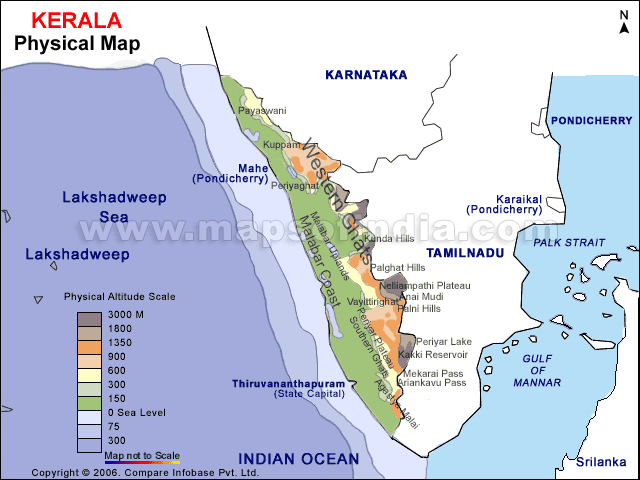Fourteen districts make up the state of Kerala. This area includes 9400sq.km of land under forests and 1941sq.kms of wetlands. The cultivated area amounts to 2.292 million hectares (mh).
The western coastal belt of Kerala is home to a vast chain of interconnected canals, estuaries, lakes and rivers. This network of interconnected waterways is popularly referred to as the Backwaters of Kerala.
Lake Vembanad, Kerala's largest waterbody lies between Alappuzha and Kochi and is more than 200 sq.km in area. All the waterways in Kerala put together add up to 8% of the total number of waterways found in India. (Measurement in terms of length).
Kerala is home to forty four rivers and the largest river is the Periyar River which is nearly 244kms long.
The total area under forests is 11,125.59sq.kms which includes wildlife sanctuaries. The forest cover is mainly to be found on the Western Ghats, also called the Sahayadri. Bordering Kerala on the eastern side it has now been classified as one of the 25 biodiversity hotspots of the world.
Biodiversity areas are those areas that are biologically rich but no longer possess their previous abundance in terms of habitat.
They play an important role in conservation and protection of endangered species of plants and animals. Forests cover nearly 28.88% of Kerala's landmass. The forests may be divided into:
- Tropical Wet Evergreen Forests
- Tropical Moist Deciduous Forests
- Mountain Sub Tropical and
- Plantations.
Other industries include seafood and marine products, textiles, and spices. The industrial policy of Kerala is designed to capitalize on the strengths of the state.
Kerala is rich in natural resources and filled with the goodness of nature. A variety of wildlife and plants make this area one of the most holistic and beautiful area of the world.
The innumerable meandering rivers and lush greenery is ideal for rejuvenating both body and soul.
Last Updated on : November 13, 2025
